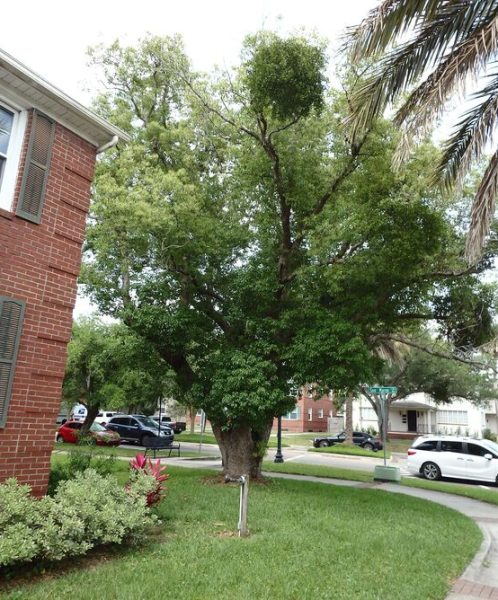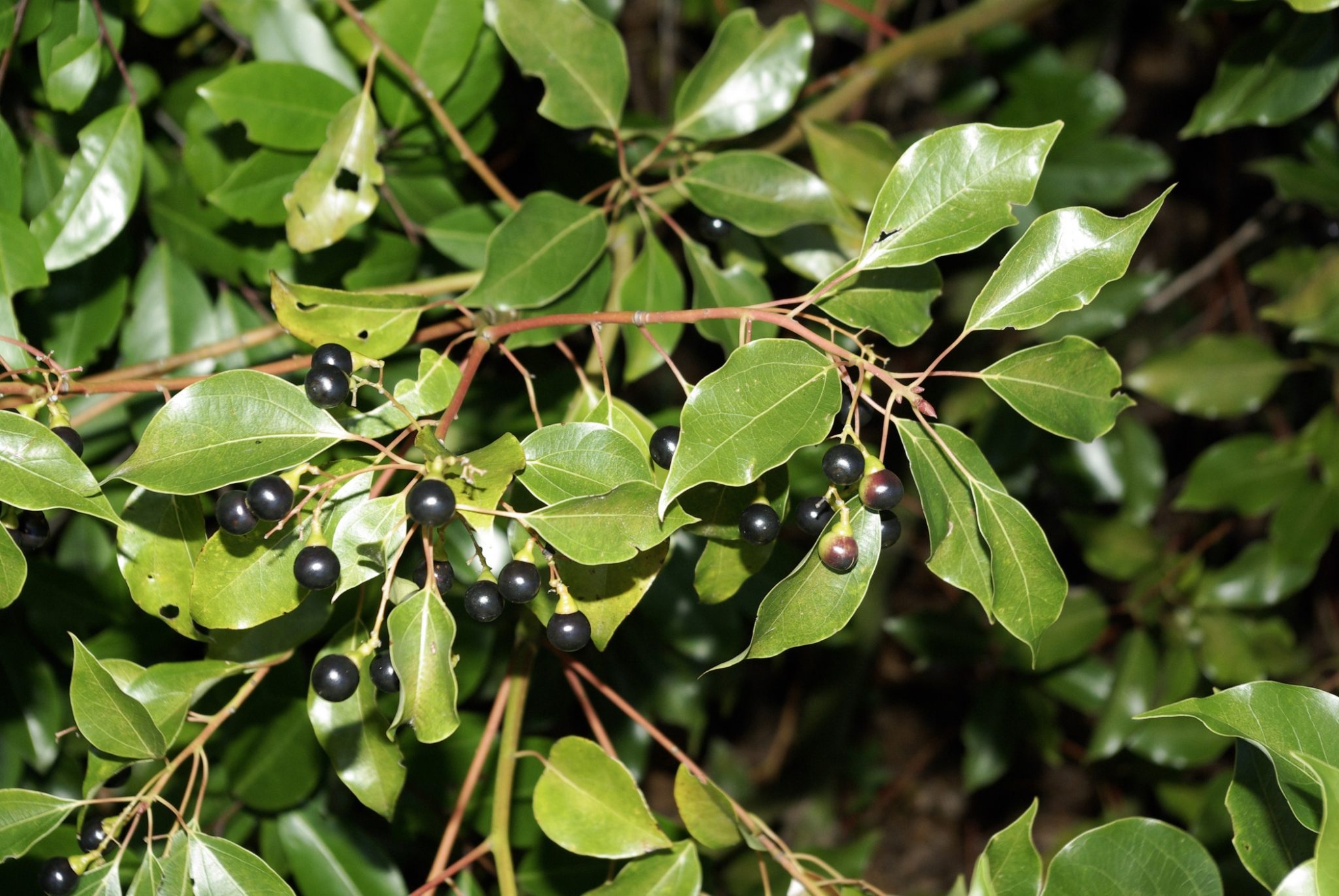Forestry & Wildlife

Invasive species are a growing problem in Alabama. Some invasive species, like kudzu or privet, have a wide distribution and can be found in every county throughout Alabama. Other invasive species have a range that is more localized, but these species are no less aggressive in their invasion. The camphor tree (Cinnamomum camphora) is a great example of this.
History
The camphor tree–also know as camphor laurel–was introduced to Florida in the 1870s as an ornamental shade tree. It was also planted for camphor production and then planted across many areas of the Gulf Coast. The climate in south Alabama is highly suitable for this evergreen species, so it began to spread—thriving on all but the most saturated sites. Camphor trees are currently found in some southern counties of Alabama and in other states across the Gulf Coast and the Carolinas. The trees can also be locally abundant in some regions.
Identification

Camphor Tree (Cinnamomum camphora)
Image by Jessica Spencer, Bugwood.org
With its glossy, dark leaves and blue-black fruit clusters, it is a large and handsome-looking shade tree in the landscape. However, it spreads rapidly in disturbed areas and can quickly become weedy and problematic. A mature tree produces large amounts of fleshy fruit that are readily spread by birds, meaning even a single mature tree in the landscape can lead to a wide area being invaded in a short period of time. Camphor trees thrive in disturbed areas and can be found along roadsides, fencerows, and will often invade unused fields where they can form dense thickets. Camphor trees may also exhibit allelopathy, meaning that the compounds produced within the leaves may inhibit the growth of competing plants. These compounds could potentially make it difficult for native species to recolonize areas where camphor has become dominant, even after the removal of the tree.
Control
A variety of management practices may be used to control camphor trees, with different methods suggested depending on the size and density of the trees. Seedlings and small trees may be killed through mowing or prescribed fire, but saplings and larger trees will resprout from cut or burnt stumps. To prevent this, it is recommended to apply herbicide to stumps immediately after cutting, or utilize basal bark spray or stem injections to apply the herbicide. Find more information about these control methods, see Cut Stump Herbicide Treatments for Invasive Plant Control and Basal Bark Herbicide Treatment for Invasive Plants in Pastures, Natural Areas & Forests.
For saplings, herbicide that is applied in a basal bark spray is an excellent control method. If the saplings or seedlings are less than 6 to 8 feet tall, various herbicides can be applied to all the leaves as a foliar spray. In treated areas, it is important to follow up with monitoring for new seedlings since seeds may be present in the seed bank–or can be brought in by birds—and will thrive in the disturbed area.
Alternatives
Replacing invasive species by choosing site-appropriate native plants benefits native wildlife and insects and improves the local landscape in many ways. There are many good native alternatives that can replace camphor trees in landscaping. Trees and shrubs with similarly glossy foliage include Southern magnolias (Magnolia grandiflora), live oaks (Quercus virginiana), wax myrtle (Morella cerifera), and American (Ilex opaca) or dahoon hollies (Ilex cassine). Sweetbay magnolia (Magnolia virginiana) and red bay (Persea borbonia) both have strongly scented foliage.
References
- “Integrated Management of Non-Native Plants in Natural Areas of Florida” by Stephen F. Enloe, Ken Langeland, Jason Ferrell, Brent Sellers, and Greg MacDonald
- “Allelopathic activity of camphor released from camphor tree (Cinnamomum camphora)” (2011) by Yumi Okamoto, Keiko Yamaji, Katsuichiro Kobayashi
- “Cinnamomum camphora: Camphor-Tree” (2019) by Edward F. Gilman, Dennis G. Watson, Ryan W. Klein, Andrew K. Koeser, Deborah R. Hilbert, and Drew C. McLean. IFAS Extension Publication
Featured image by Friend Nation

